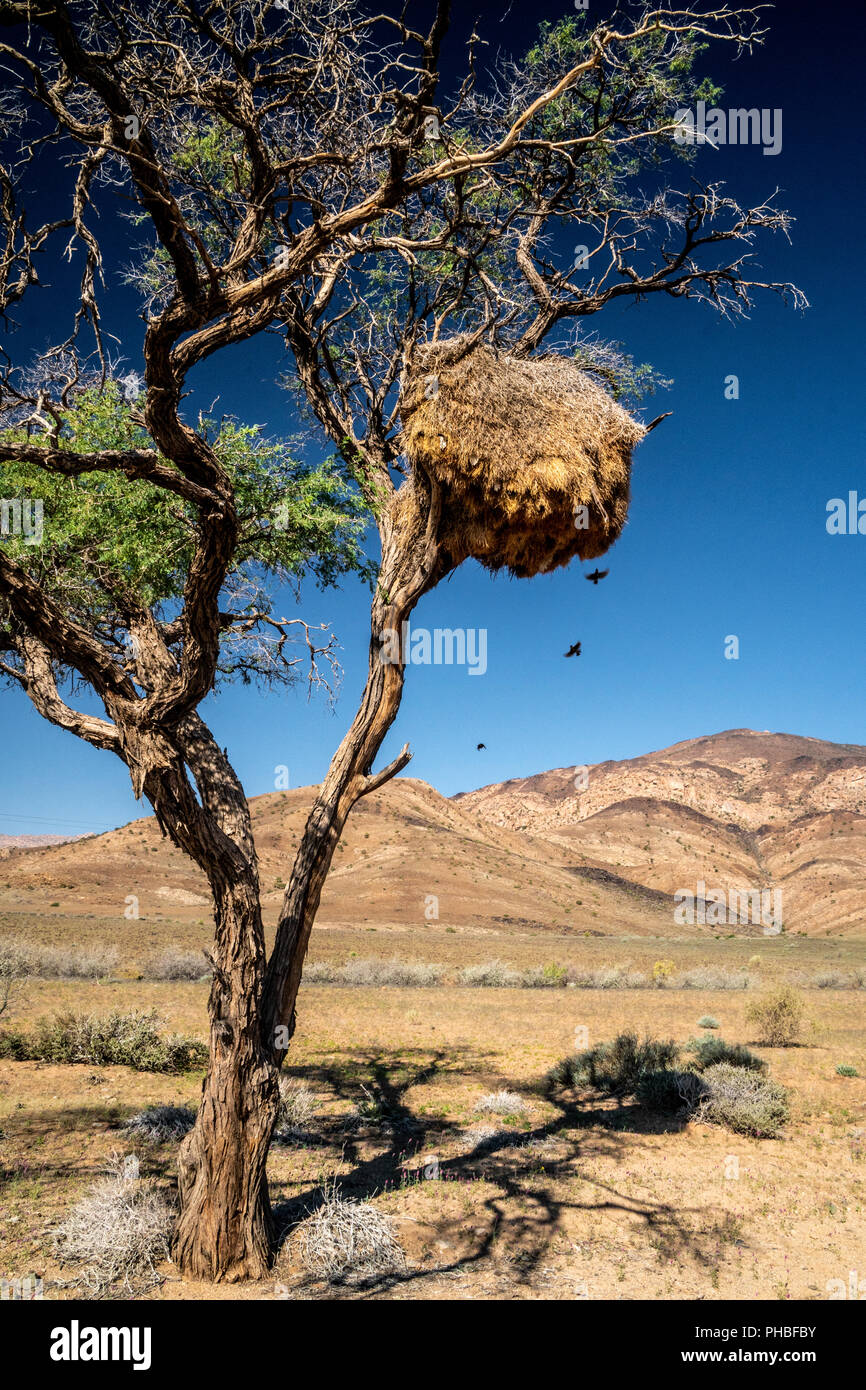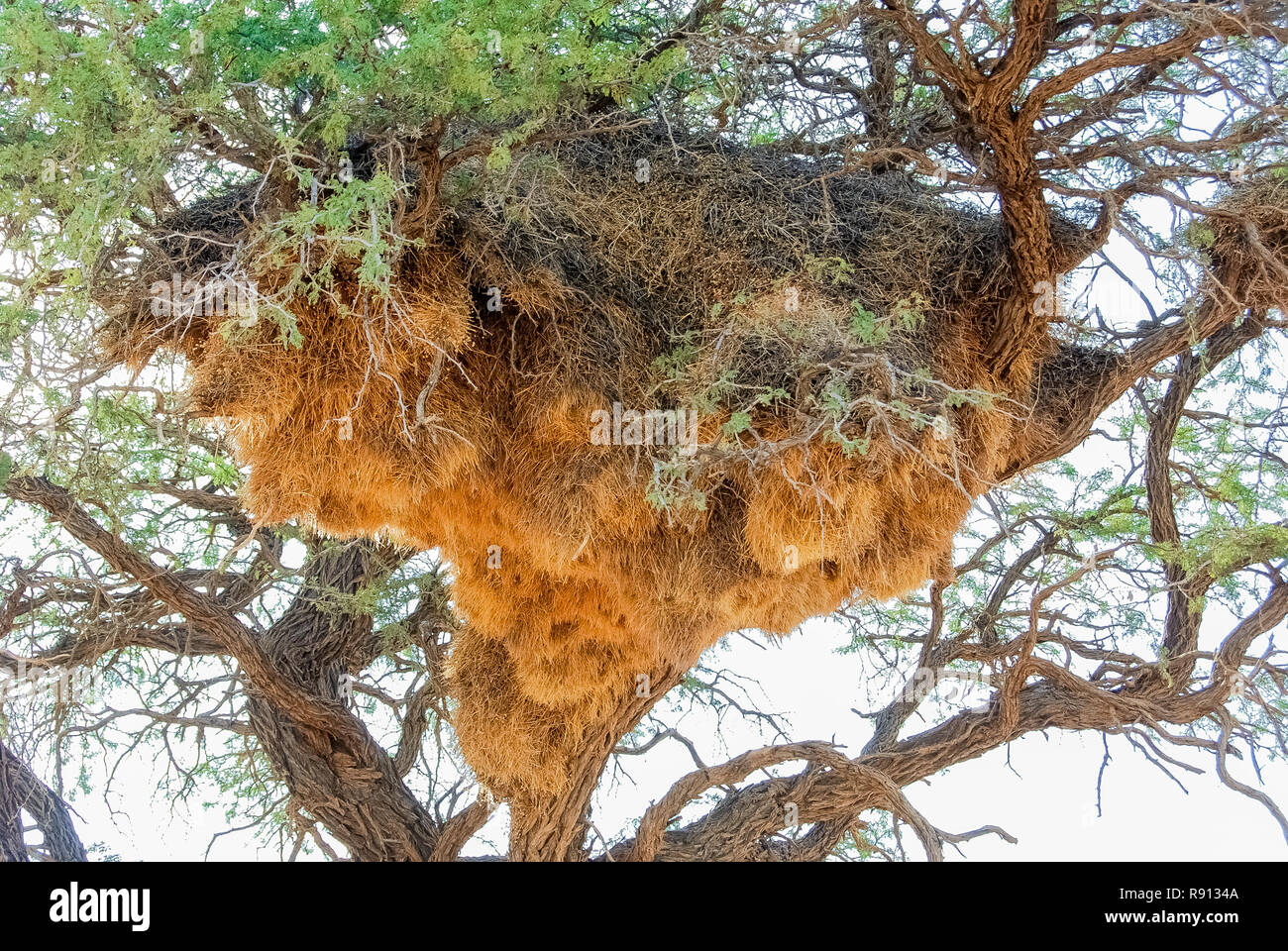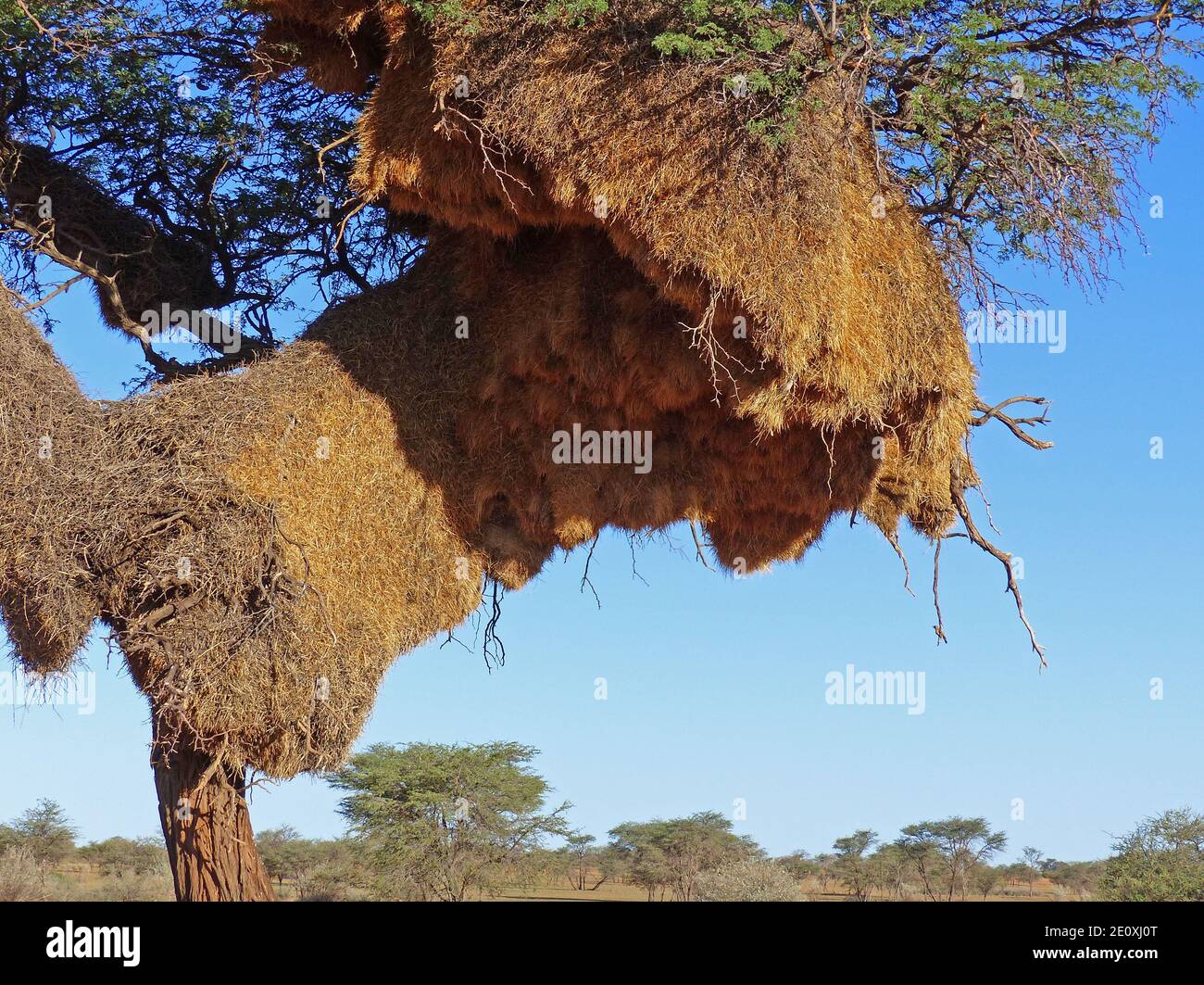A Natural Marvel: Africa’s Giant Bird “Apartment Complexes” That Last Over a Century

In the arid landscapes of Namibia, South Africa, and Botswana, one small bird species is quietly redefining the limits of animal architecture. The Sociable Weaver (Philetairus socius), though tiny in size, constructs the largest and most complex nests in the avian world — vast communal structures that resemble giant thatched huts suspended in trees or atop utility poles.

But these are no ordinary nests. They are massive, multi-family “apartment blocks,” sometimes weighing over a ton and measuring up to 20 feet wide and 10 feet tall. Inside, each breeding pair has its own private chamber lined with soft plant materials and equipped with a personal entrance. From below, the tightly clustered doorways form an intricate, honeycomb-like pattern.

What makes these nests even more extraordinary is their longevity and adaptability. They’re constantly expanded and renovated by successive generations, with some remaining in use for over 100 years. Designed to withstand extreme heat, cold, rain, and drought, the structures are not just shelters — they are feats of cooperative engineering.

The communal nature of these nests also reflects a profound lesson from the natural world: that through cooperation, patience, and shared effort, even the smallest creatures can create something monumental.

A true wonder of natural design, the nests of the Sociable Weaver stand as enduring testaments to resilience, collaboration, and the quiet genius of nature.











